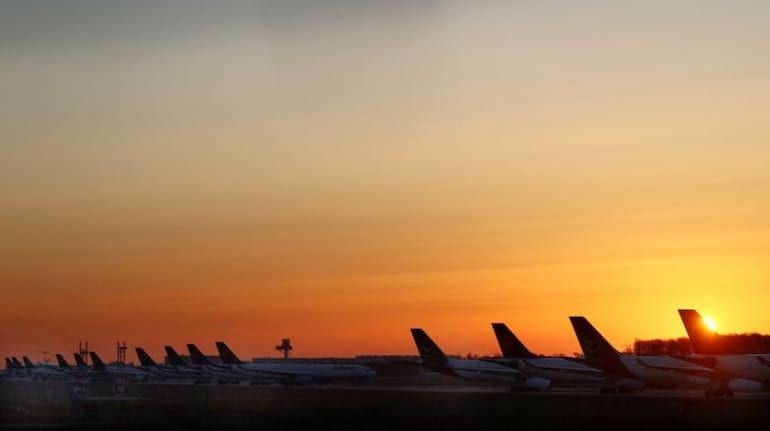



Seasonality in air travel has been an eternal challenge for the industry, which has to sit on costly assets. While Europe has a clear peak from June to August (with a month or two prior and after seeing considerable traffic), India has two peaks, making capacity planning a little more difficult. But as the “peakest” of seasons comes up, most Indian carriers are shrinking instead of growing, and this puts a post-Covid recovery in serious doubt.
Data shared by the Directorate General of Civil Aviation (DGCA) shows the regulator has approved 21,941 weekly flights across airlines, compared to 25,309 weekly flights in the summer schedule, a fall of 13.31 percent. Compared to the winter 2021 schedule, the fall is 1.5 percent. It has been a year since capacity caps were removed and two months since fare caps were removed, but passenger numbers are yet to touch pre-Covid levels.
In all, airlines have approvals for 3,134 daily flights, a number that is unlikely to be achieved going by past trends. The highest number of departures per day since the restart post-lockdown has been 2,882.
Major drop sequentially
Go First is shrinking the most with a 45 percent reduction in flights from its current summer schedule. This is followed by SpiceJet, which will have 24 percent fewer fights. Air India comes next with 19 percent less than last season. AirAsia India intends to operate 9 percent fewer flights.
Interestingly, market leader IndiGo, too, has asked for a 10 percent cut in flights sequentially. IndiGo and Vistara have been the only carriers to have operated over 90 percent of their approved schedules in the current scheduling season.
Vistara is the only major airline that seems to have expanded its schedule. The airline has approval for 11 percent more flights than the current season. Star Air, too, is expanding by 11 percent, while flybig is expanding by 35 percent. Alliance Air, the only government-owned airline in the country, is increasing its flight count by 5 percent.
In absolute terms though, Go First will see an average of 167 fewer flights per day, while IndiGo and SpiceJet will see 149 and 143 fewer flights per day, respectively. The number stands at 67 and 20 fewer flights per day for Air India and AirAsia India, respectively.
Vistara has approvals for 29 additional daily flights over the current season, while flybig intends to operate eight more daily flights, followed by Alliance Air with seven and Star Air with two. Akasa Air will see an average of 68 daily flights. The airline started operations in August.
Pre-Covid levels a challenge
February 2020, the last full month of operations pre-Covid, had recorded an average of 3,135 daily flights. The month had seen an average of 4.25 lakh passengers. This number has not been breached even on a single day since and hence averaging as much across a month is a far-fetched thought for now.
So far, the flight count has averaged less than 75 percent this season and is largely led by IndiGo and Vistara adhering to their approved flight count or close to it. With IndiGo shrinking on its own and Vistara’s increase not covering up for everyone, reaching anywhere close to 90 percent or more in terms of approved flights looks a distant possibility. This automatically translates to not having as many seats in the air as one would need to get to pre-Covid traffic levels.
For IndiGo, which has been leading the charge on the capacity front, the addition of A321s is helping add capacity in terms of ASK (Available Seat Kilometres) even when departures aren’t going up. Coupled with lack of additions with ATRs, this has meant that the average seat count for the airline and average ASKs have gone up in the last season.

Bad for passengers, good for shareholders?
A drop in capacity could drive up airfares on some routes if not all. The other fallout is that of losing connectivity to certain stations, which means passengers would have to travel one-stop instead of non-stop, most likely shelling out additional money.
While the drop in capacity is a combination of supply chain issues for a few airlines and financial challenges for a few, this could help moderate the growth rate from the days of 20 percent growth. A moderated growth rate, backed by a fare curve where passengers can snatch good deals early in the booking cycle and pay more closer to travel, will push up yields for airlines, opening a window for profitability.
A sliding Rupee, a raging war in Europe, and oil prices not dropping are some of the global issues affecting airlines in India and it might make sense to shrink the schedule rather than burn cash. The optics of flight count are not as important as hard cash.
Discover the latest Business News, Sensex, and Nifty updates. Obtain Personal Finance insights, tax queries, and expert opinions on Moneycontrol or download the Moneycontrol App to stay updated!
Find the best of Al News in one place, specially curated for you every weekend.
Stay on top of the latest tech trends and biggest startup news.